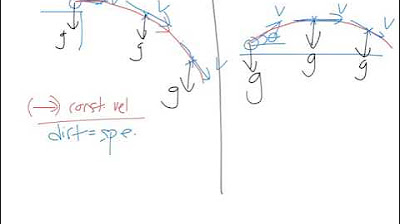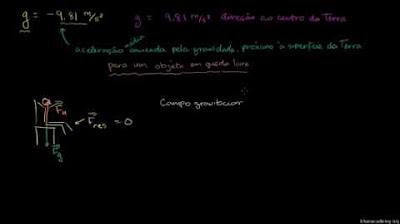Freely Falling Objects and Acceleration Due to Gravity
Summary
TLDRThis script explores the concept of freely falling objects and the acceleration due to gravity. Contrary to the common belief that heavier objects fall faster, Galileo demonstrated that all objects fall at the same rate regardless of their mass. This was later confirmed by Robert Boyle's experiment, where a coin and a feather fell at the same speed in a vacuum, proving that air resistance, not mass, affects the rate of fall.
Takeaways
- 🌍 All objects fall towards the Earth due to gravitational force.
- 📉 The initial belief was that heavier objects fall faster than lighter ones.
- 🔍 Galileo demonstrated that all objects fall at the same rate in the absence of air resistance.
- 🌬️ Air resistance affects the fall rate of lighter objects more than heavier ones.
- 🎓 Galileo's findings were later experimentally confirmed by Robert Boyle.
- 🧪 Boyle's experiment involved a coin and a feather in a vacuum tube.
- 📉 When the tube was inverted, both objects reached the bottom simultaneously.
- 🚀 This experiment showed that acceleration due to gravity is independent of mass.
- 🌀 The concept of freely falling bodies is crucial for understanding motion under gravity.
- 📚 Understanding the principles of free fall is fundamental to physics and engineering.
Q & A
What causes objects to fall towards the Earth?
-Objects fall towards the Earth due to the gravitational force exerted by the Earth on the object.
Why does a stone reach the ground before a cotton ball when dropped from the same height?
-The stone reaches the ground earlier than the cotton ball due to the resistance of air, which affects the lighter cotton ball more significantly.
What did Galileo demonstrate about the acceleration of falling objects?
-Galileo showed that all bodies, whether light or heavy, fall at the same speed towards the Earth, contradicting the common misconception that heavier objects fall faster.
How did Galileo explain the slower fall rate of lighter objects?
-Galileo explained that lighter bodies fall at a slower rate due to the resistance of the air.
Who experimentally proved Galileo's theory on the acceleration of freely falling bodies?
-Robert Bo experimentally proved Galileo's theory by demonstrating that a coin and a feather fall at the same rate in a vacuum.
What was the setup of Robert Bo's experiment to test the acceleration of falling objects?
-Robert Bo placed a coin and a feather in a long glass tube, evacuated the air using a vacuum pump, and observed that both objects reached the bottom of the tube at the same time when the tube was inverted.
What conclusion did Robert Bo draw from his experiment with the coin and feather?
-Robert Bo concluded that the acceleration produced in all freely falling bodies is the same and does not depend upon the mass of the falling body.
Why is air resistance significant in the fall of objects?
-Air resistance is significant in the fall of objects because it opposes the motion of the objects through the air, affecting lighter objects more due to their lower mass.
How does the mass of an object affect its acceleration due to gravity?
-The mass of an object does not affect its acceleration due to gravity; all objects experience the same acceleration regardless of their mass.
What is the significance of understanding the acceleration of freely falling objects?
-Understanding the acceleration of freely falling objects is significant in various fields, including physics, engineering, and astronautics, as it helps in predicting motion and designing systems that operate under the influence of gravity.
Can the principle of equal acceleration for all objects in free fall be applied to objects in space?
-Yes, the principle of equal acceleration for all objects in free fall can be applied to objects in space, as there is no significant air resistance in the vacuum of space, and all objects fall towards a celestial body at the same rate.
Outlines

This section is available to paid users only. Please upgrade to access this part.
Upgrade NowMindmap

This section is available to paid users only. Please upgrade to access this part.
Upgrade NowKeywords

This section is available to paid users only. Please upgrade to access this part.
Upgrade NowHighlights

This section is available to paid users only. Please upgrade to access this part.
Upgrade NowTranscripts

This section is available to paid users only. Please upgrade to access this part.
Upgrade Now5.0 / 5 (0 votes)





